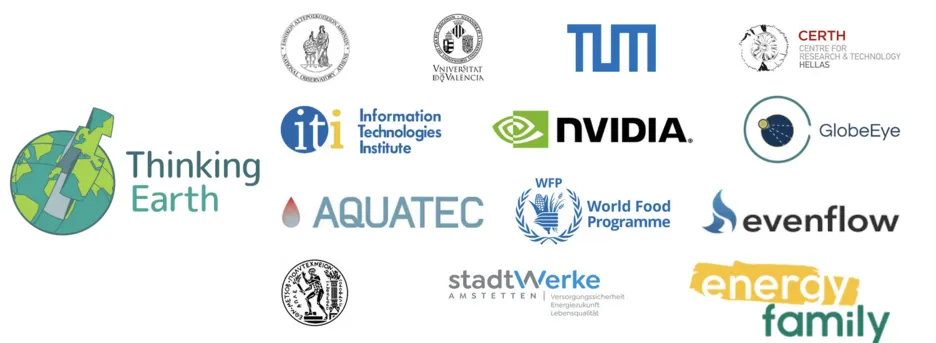Horizon Europe – ThinkingEarth
Funded by European Commission
Project Leader at TUM
Prof. Dr.-Ing. Xiaoxiang Zhu
Project Scientists at TUM
Thomas Dujardin, Yi Wang
Project Coordinator
National Observatory of Athens (NOA)
Cooperation Partners
Universitat de València (UVEG)
Centre for Research & Technology, Hellas (CERTH)
Evenflow
EnergyFamily
NVIDIA Italy S.r.l.
Stadtwerke Amstetten GmbH
GlobeEye
Aquatec, Proyectos Para El Sector Del Agua S.A.
World Food Programme
National Technical University Of Athens
Runtime
2024 – 2026
To harness the power of Artificial Intelligence (AI), we use cutting-edge techniques, including deep learning, causality, eXplainable AI, and physics-aware Machine Learning. We leverage the predictive abilities of Self-Supervised Learning and Graph Neural Networks to develop task-agnostic Copernicus Foundation Models and a Graph representation model of the Earth.
We’ll explore self-supervised learning techniques tailored for Copernicus Sentinel datasets, with a focus on improving contrastive learning and masked image modelling for Sentinel-1, 2, and 3 data compression. Our approach involves developing methods to fuse self-supervised representations from various Sentinel data types, retaining valuable information while considering modality dominance. Additionally, we aim to enhance the generalisation of deep learning models across space and time using self-supervised learning embeddings, meta-learning, and continual learning strategies.
We demonstrate the potential of these assets through small-scale downstream Spotlight Applications, as well as large-scale use cases that integrate distributed industrial and user non-EO datasets. These use cases address ambitious problems with high socio-environmental impact and new business growth opportunities, such as accelerating Europe’s clean energy transition and independence from volatile fossil fuels, understanding Earth’s processes by modelling causal Earth system teleconnections, and assessing and modelling the impact of current and future Climate emergency in biodiversity and food security.
Use Cases

